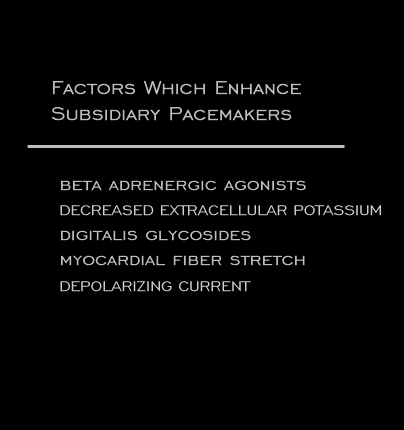
If the rate of spontaneous depolarization in subsidiary pacemakers becomes more rapid than that in the sinus node, ectopic beats and rhythms may emerge. A variety of factors are capable of enhancing diastolic depolarization in regions other than the sinus node. These include, but are not limited to, those shown here.
